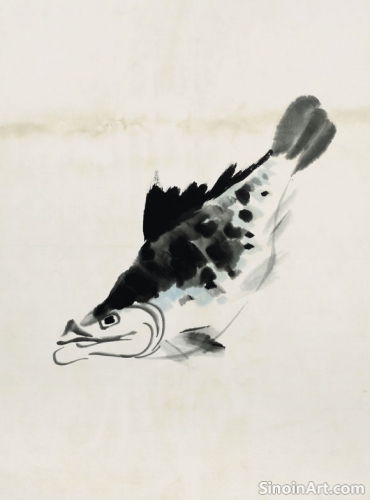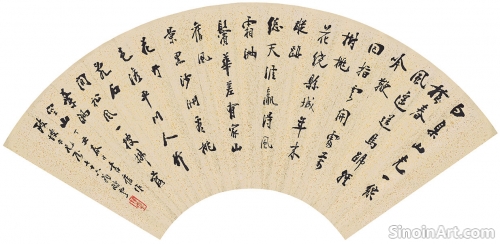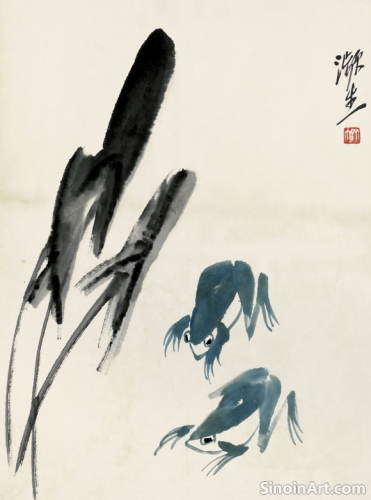The Importance of "Qi" in Xieyi Brushwork
|
"Qi" (氣), often translated as "vital energy," "life force," or "breath," is a fundamental concept in Chinese philosophy and art, particularly crucial in understanding the expressive qualities of Xieyi brushwork. It's the intangible energy that should be present in every brushstroke. The brushwork should reflect the living spirit and creative intent of the artist.  The artist's goal is not just to create lines but to imbue those lines with qi, a sense of vitality, movement, and expressive energy. Each stroke is a manifestation of this internal and external energy. The brushstrokes should reflect the life force that should flow through the artist, the brush, and the artwork.  The artist's own qi is crucial to achieving this, requiring that they maintain a state of balance, focus, and inner harmony. The artist has to be centered and grounded, so their inner energy can be effectively channeled through the brushwork. The mental and physical state of the artist directly influences the quality of the artwork.  The concept of qi is often related to the principle of spontaneity, as the artist seeks to allow their brushstrokes to flow freely, capturing the energy of the moment, rather than attempting to force or control their movement. The spontaneous application of ink is aligned with the natural flow of energy that is an essential aspect of qi. Ultimately, qi in brushwork is about creating art that is not just visually appealing but also deeply alive, expressing the vitality of the natural world and the artist’s inner spirit. It should feel as if it is imbued with its own unique life force and creative intent. The goal is to create something that truly resonates with the soul. |
Tag : Qi in art, vital energy, life force, brushstroke energy, Chinese aesthetics
Related information
- The Future of Xieyi Painting
- The Influence of Literati Painting on Xieyi
- Xieyi Painting and the Concept of "Ziran"
- The Role of the Inkstone in Xieyi
- Xieyi Painting and the Concept of "Yi Qian Bi Hou"
The future of Xieyi painting is bright, with contemporary artists expanding its boundaries, exploring new mediums, embracing social themes, and sharing their work globally, while the art form's ability to connect emotionally ensures its continued vitality and relevance.
Xieyi painting is deeply influenced by the tradition of literati painting, emphasizing personal expression, calligraphic brushwork, the blending of poetry and painting, and the pursuit of simplicity and naturalness.
"Ziran" (naturalness) is a cornerstone of Xieyi painting, emphasizing effortless ease, rejection of artificiality, and a profound connection with the natural world, requiring an understanding of materials and authenticity in personal expression, allowing the art process to unfold organically.
The inkstone (yàn) is a vital part of Xieyi painting, influencing the quality and texture of ink, and serving as an object of both practical use and beauty, representing a key part of the ritual of painting and connecting the artist to tradition.
"Yi Qian Bi Hou" (intention before the brush) is central to Xieyi, emphasizing the importance of having a clear vision and intention before painting, so that brushstrokes naturally express the artist's inner feelings and ideas, requiring thoughtful preparation, and guiding brushwork with creativity and personal vision.